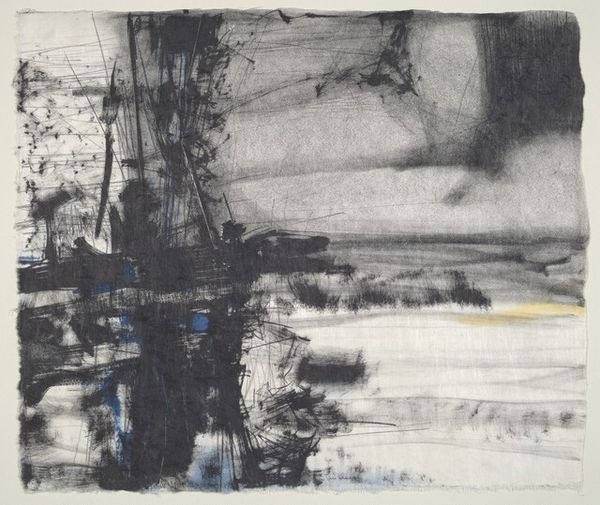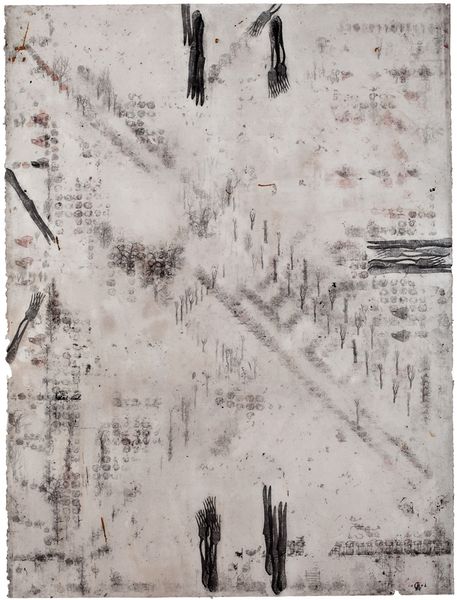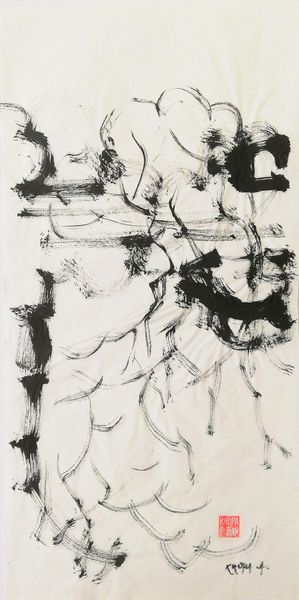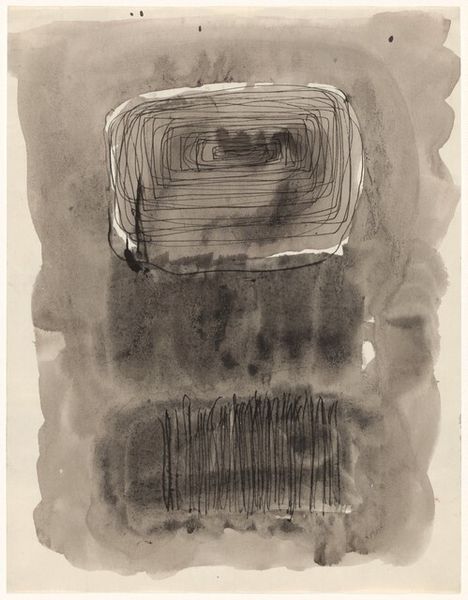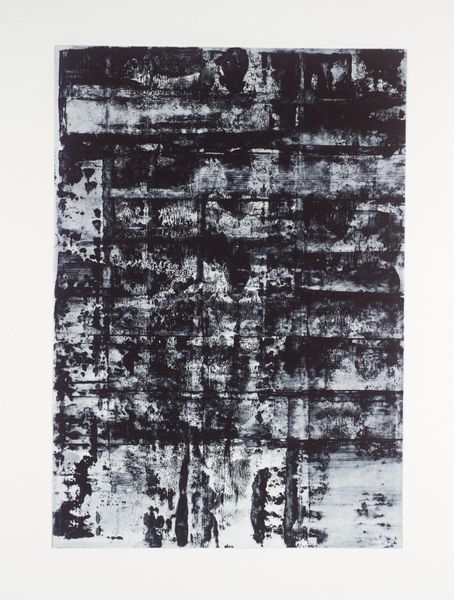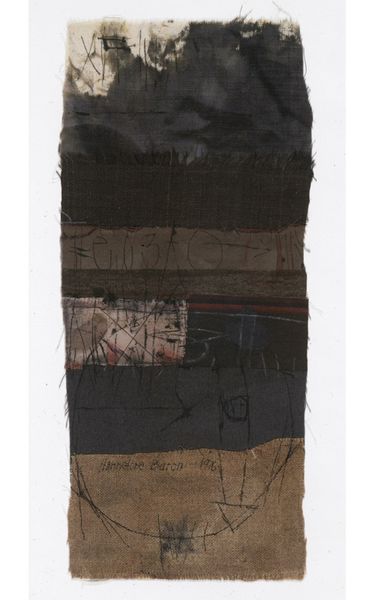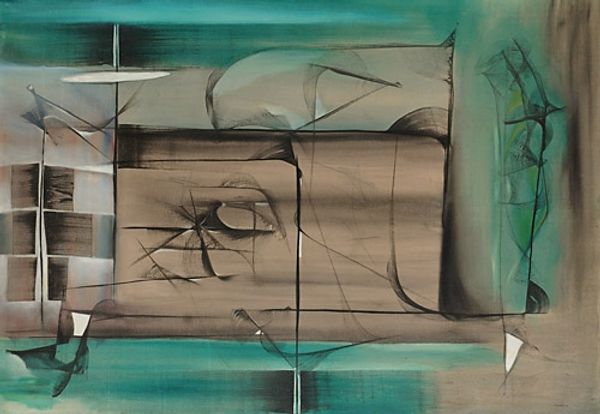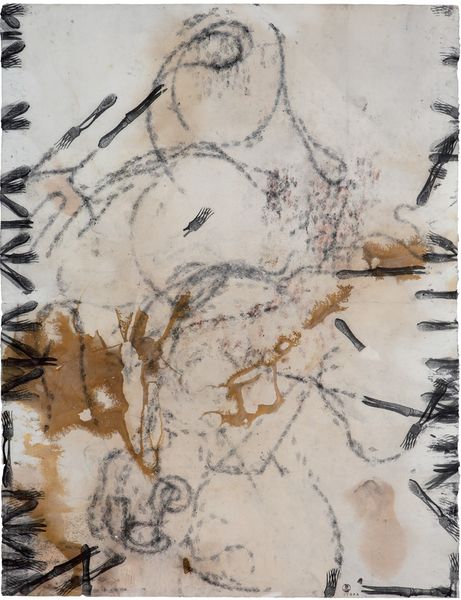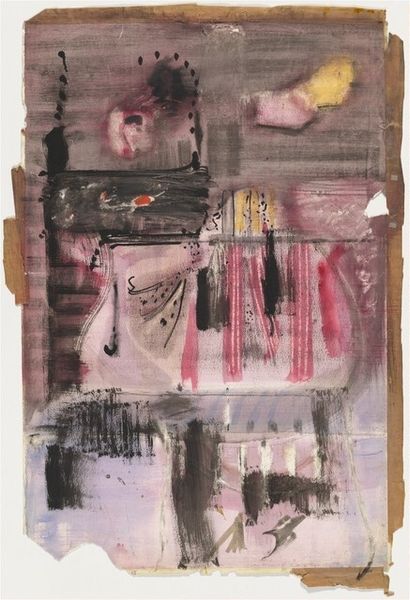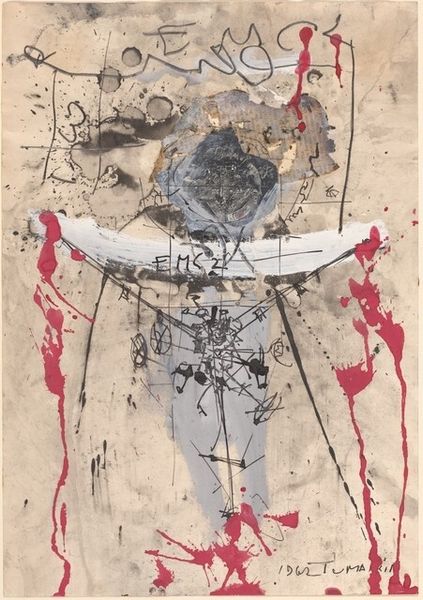
Dimensions: sheet: 103.51 × 68.74 cm (40 3/4 × 27 1/16 in.)
Copyright: National Gallery of Art: CC0 1.0
Editor: This untitled piece, created around 1946 by Mark Rothko, uses watercolor and ink on paper. It strikes me as a kind of negotiation between form and dissolving boundaries, a tension between the structured horizontal bands and the more fluid, amorphous shapes within. What sense do you make of it? Curator: That's a perceptive reading. I see it reflecting the anxieties of the postwar era. The abstract forms and colors can be interpreted as a response to the trauma and uncertainty following World War II, but in the U.S., abstract painting became intertwined with American cultural identity and even a kind of quiet political expression during the Cold War. Editor: Political? In what way? Curator: Abstract Expressionism became a symbol of American freedom of expression, contrasting with the more rigid, state-controlled art of the Soviet Union. Museums played a key role in promoting this idea. Editor: So, this artwork became a pawn? Curator: It wasn’t consciously created for that purpose, of course. But its embrace by institutions solidified its connection to those larger cultural narratives, which shapes how we view it today. The loose lines and color choices could show an interest in spiritualism, aligning with the search for meaning in the aftermath of global conflict. What about its materiality stands out to you? Editor: The roughness of the paper makes me feel it shouldn’t be in a museum. Maybe it would feel more relatable if it was in an educational space, where handling might be allowed. Curator: Interesting. Its presentation certainly influences how we perceive its value, doesn’t it? I suppose artworks are valued as social objects as well as cultural artifacts. Editor: Exactly. I hadn't considered its institutional role so explicitly, how context transforms our interpretation. Curator: And I see I took for granted what it means for a museum to house such delicate items. Thanks to you, I am inspired to find ways to invite the audience to experience the artworks beyond the context of their setting.
Comments
No comments
Be the first to comment and join the conversation on the ultimate creative platform.
